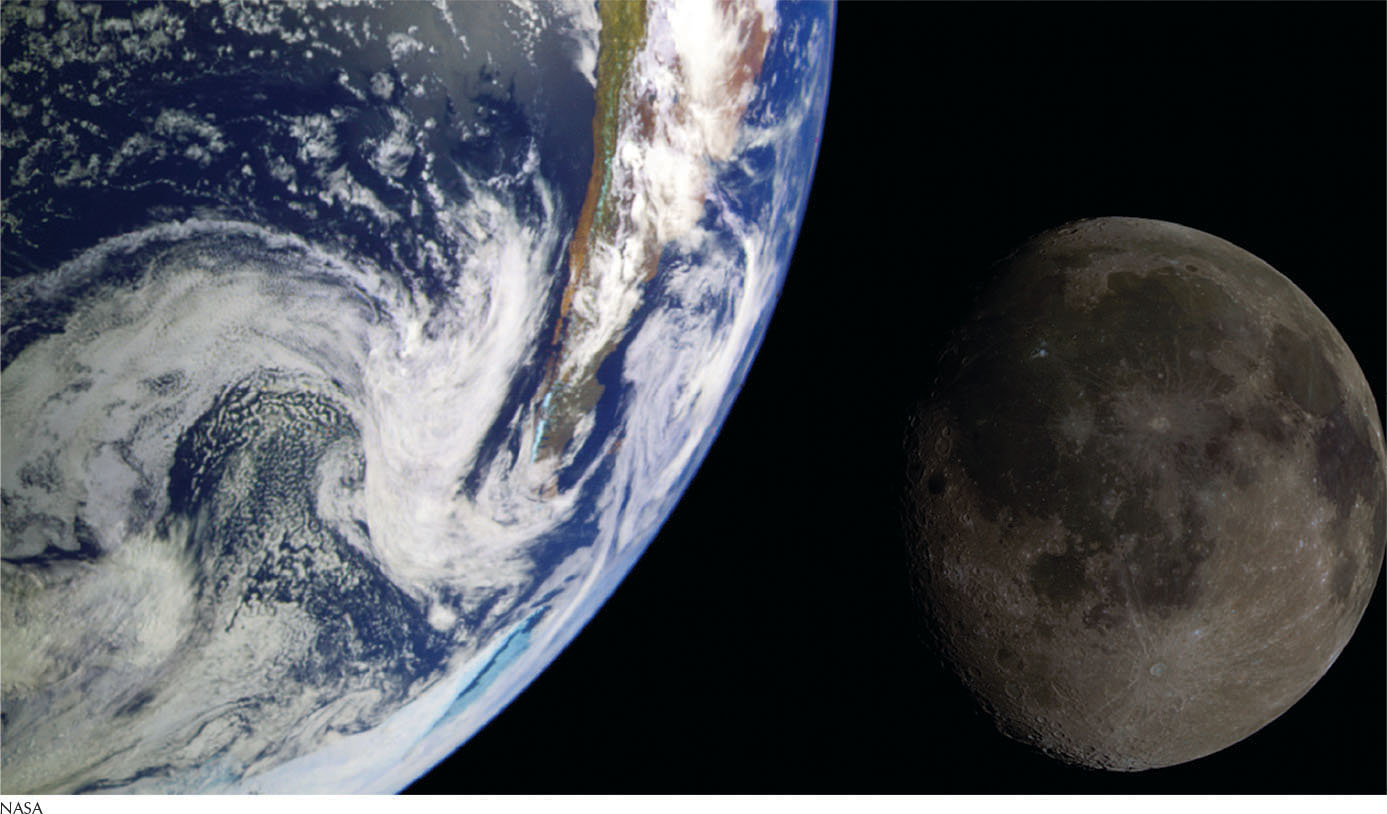157
CHAPTER [strong]6[/strong]

Earth and the Moon
WHAT DO YOU THINK?
 Can Earth’s ozone layer, which has been partially depleted, be naturally replenished?
Can Earth’s ozone layer, which has been partially depleted, be naturally replenished?
 Who was the first person to walk on the Moon, and when did this event occur?
Who was the first person to walk on the Moon, and when did this event occur?
 Do we see all parts of the Moon’s surface at some time throughout the lunar cycle?
Do we see all parts of the Moon’s surface at some time throughout the lunar cycle?
 Does the Moon rotate and, if so, how fast?
Does the Moon rotate and, if so, how fast?
 What causes the ocean tides?
What causes the ocean tides?
 When does the spring tide occur?
When does the spring tide occur?
Answers to these questions appear in the text beside the corresponding numbers in the margins and at the end of the chapter.
158
Imagine you are entering our solar system in your travels from a distant star system, looking for habitable worlds. Your spacecraft approaches the inner solar system on the opposite side of the Sun from Earth. You encounter Mars, with its thin, chilled, unbreathable atmosphere and barren desert landscapes. Not very promising. Moving much closer to the Sun, the next planet you happen to encounter, Venus, is enshrouded in corrosive clouds hiding a menacingly hot surface. Finally, moving around the Sun and heading back outward, you spy Earth, with its liquid-water oceans orbiting our star between these two relatively forbidding worlds—one too cold, the other too hot. As noted near the end in Chapter 5, Earth is in the goldilocks zone around our Sun: not too hot, not too cold, just right (for life). Ever-changing white clouds pirouette above the browns and blues of Earth’s continents and oceans. Its close companion, the Moon, pockmarked by countless craters, helps cause those oceans to move up and down in a ceaseless rhythm. Earth is the planet that you seek.
In this chapter, we will explore Earth and the Moon, including what makes Earth suitable for life. Our detailed and rapidly developing knowledge of Earth allows us to present material on topics that range from the magnetic fields surrounding it, to its atmosphere and climate, to the depth and composition of its crust, and to the properties extending to its metal-rich core. While also increasing, our knowledge about the Moon is much more limited. We will explore in the next chapter the other terrestrial worlds in our solar system, all with a variety of different properties from Earth, leading to vastly different environments from our own.
In this chapter you will discover
 why Earth is such a satisfactory environment for life
why Earth is such a satisfactory environment for life
 that Earth is constantly in motion inside and out
that Earth is constantly in motion inside and out
 how Earth’s magnetic field helps protect us
how Earth’s magnetic field helps protect us
 what made the craters on the Moon
what made the craters on the Moon
 how the Sun and the Moon cause Earth’s tides
how the Sun and the Moon cause Earth’s tides
 that Earth and the Moon each have two (different) major types of surface features
that Earth and the Moon each have two (different) major types of surface features
 that water ice has been found on the Moon
that water ice has been found on the Moon